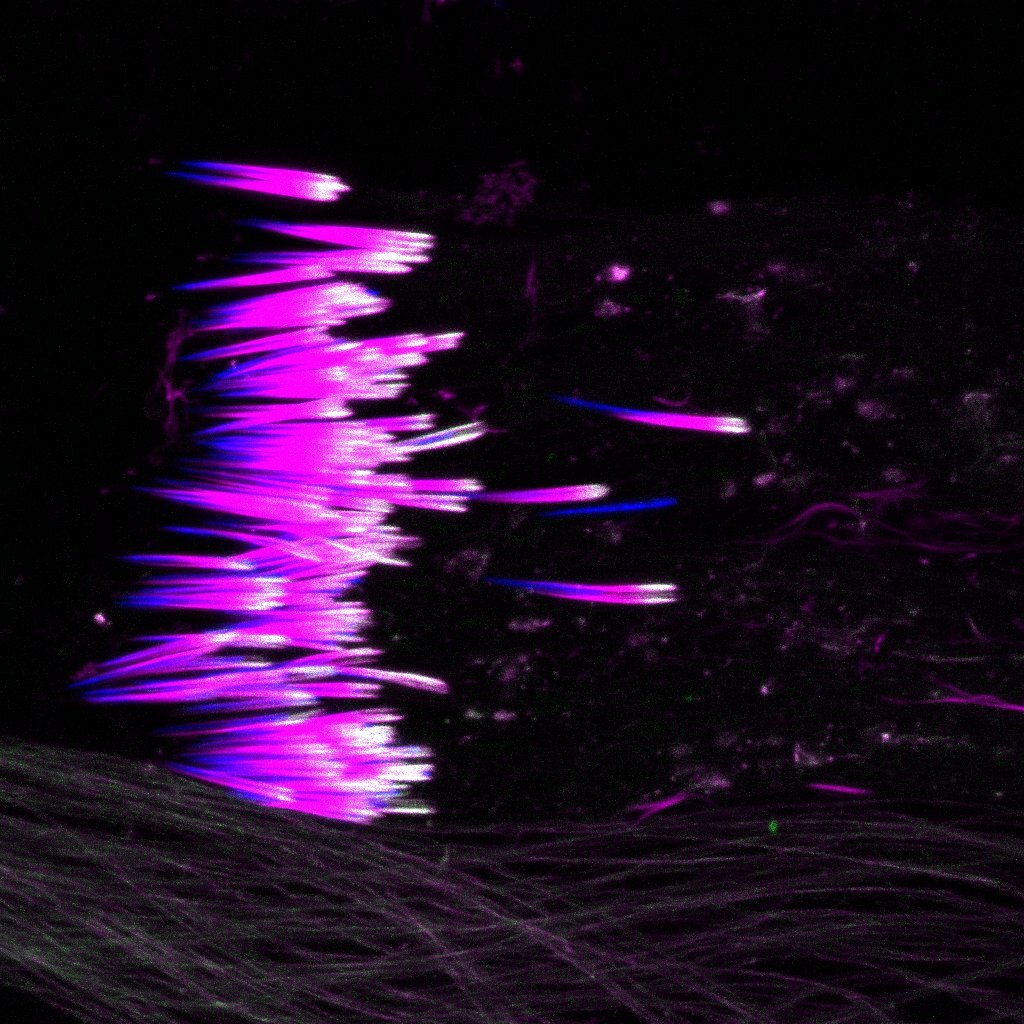Publications
Key publications:
1. Stromberg, K.A., Spain, T.S., Tomlin, S.A., Jordan Powell, Amarillo, K.D., Schroeder, C.M. Evolutionary diversification reveals distinct somatic versus germline cytoskeletal functions of the Arp2 branched actin nucleator protein. Current Biology (2023).
Check it out here and the earlier draft, a preprint here on BioRxiv.
Why is this story cool? Our work suggests canonical Arp2’s function differs between somatic versus germline contexts, and Arp2 paralogs have recurrently evolved and specialized for actin branching in the Drosophila testis. We identified how evolution shaped the Arp2 structure for roles in the testis.
2. Schroeder, C.M., Tomlin, S.A., Mejia Natividad, I., Valenzuela, J.R., Young, J., and Malik, H.S. An actin-related protein that is most highly expressed in Drosophila testes is critical for embryonic development. eLife (2021).
Check it out here. See initial manuscript on BioRxiv: DOI: https://doi.org/10.1101/2020.09.28.317503.
Highlighted in preLights, supported by The Company of Biologists.
Why is this publication cool? We were studying what seemed to be a testis-specific Arp, but we were surprised to find out that this divergent Arp was actually playing critical roles in embryonic development in Drosophila, despite low expression beyond the male germline. This work has functional implications for other divergent Arps in flies and humans.
3. Schroeder, C.M., Valenzuela, J.R., Mejia Natividad, I., Hocky, G.M. and Malik, H.S. A burst of genetic innovation in Drosophila actin-related proteins for testis-specific function. Molecular Biology and Evolution (2019) vol. 37, 757-772.
Check it out here.
Highlighted in the Fred Hutchinson Cancer Research Center’s News.
Why is this publication cool? Actin has always been thought to be highly conserved, but we found that an unusual burst of novel actin-related proteins (Arps) arose in one specific clade of Drosophila species. This work shows that the emergence of divergent ‘testis’ Arps has been happening recurrently throughout animal evolution.
Additional publications from collaborations and Courtney’s PhD work:
4. Bigge, B.M., Rosenthal, N.E., Sept, D., Schroeder, C.M., Avasthi, P. Initial ciliary assembly in Chlamydomonas requires Arp2/3-dependent recruitment from a ciliary protein reservoir in the plasma membrane. BioRxiv (2020). DOI: https://www.biorxiv.org/content/10.1101/2020.11.24.396002v1.
5. Clayton, NS, Fox, M, Vicente-Garcia, JJ, Schroeder, CM, Littlewood, TD, Wilde, JI, Corry, J, Krishnan, K, Zhang, Q, Brown, MJB, Crafter, C, Mott, HR and Owen, D. Assembly of nuclear dimers of the PI3K Regulatory subunits is regulated by the Cdc42-Activated Tyrosine Kinase ACK. Journal of Biological Chemistry (2022) vol. 298, 101916. Check it out here.
6. Schroeder, C.M. and Vale, R.D. Assembly and activation of dynein-dynactin by the cargo adaptor protein Hook3. Journal of Cell Biology (2016) vol. 214, 309–318. Check it out here.
7. Schroeder, C.M., Ostrem J.M.L., Hertz, N.T. and Vale, R.D. A Ras-like domain in the light intermediate chain bridges the dynein motor to a cargo-binding region. eLife (2014) vol. 3. Check it out here.
Recommended on F1000Prime (now known as Faculty Opinions)
Crystal structure featured in the textbook Biochemistry, 6th edition
Reviews and perspectives:
1. Schroeder, C.M. and Malik, H.S. Meiosis: How Gambling Chromosomes Beat the Rules. Current Biology (2019) vol. 29, R1247-R1248. Check it out here.
2. Schroeder, C.M. and Malik, H.S. Kindr motors drive in meiosis. Cell (2018) vol. 173, 813-815. Check it out here.
3. Bhabha, G.*, Johnson, G. T.*, Schroeder, C.M. and Vale, R.D. How dynein moves along microtubules. Trends in Biochemical Sciences (2016) vol. 41, 94–105. *Co-first Authors Check it out here.
Complete list of published work in My NCBI Bibliography:
https://www.ncbi.nlm.nih.gov/myncbi/courtney.schroeder.1/bibliography/public/
